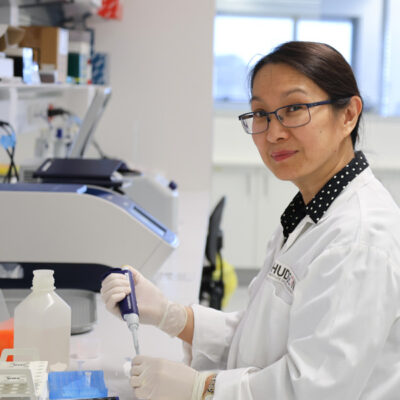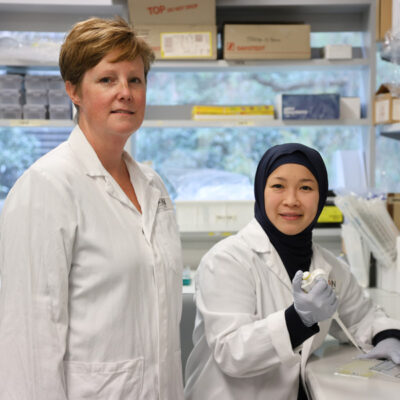Looks like a mouse, acts like a mouse … menstruates like a human
By Hudson Institute communications
A species of desert mouse has a menstrual cycle that is more similar to women than previously thought, according to a new study by Hudson Institute of Medical Research scientists.

The spiny mouse could be key to understanding why some women develop endometriosis and exceptionally heavy, painful periods.
The findings of the study by Dr Jemma Evans and PhD student Nadia Bellofiore have been published in the journal Human Reproduction, and show a raft of similarities between humans and spiny mice in the way periods occur.
Ms Bellofiore says that apart from primates, very few mammals have periods, making menstruation difficult to study.
“The spiny mouse demonstrates similar variation in degree of menstrual bleeding, with some females having very noticeable, heavy periods,” she says.
“They also mimic the inflammation, breakdown and repair processes of menstruation in women, which may aid in understanding the basis for normal menstrual cycles.
“Importantly, spiny mice also exhibit changes to blood vessels in preparation for pregnancy, which has never before shown in rodents. This could be pivotal for studying critical blood vessel disorders such as preeclampsia in the future.”

In 2015, Ms Bellofiore and her team discovered that the spiny mouse, native to the deserts of Africa and the Middle East menstruates for approximately 72 hours every nine days. Until then, scientists largely believed that no rodent species menstruated.
Ms Bellofiore’s research is now focused on understanding whether the spiny mouse could be a useful preclinical model for understanding menstrual disorders.
“Our initial discovery of menstruation in the spiny mouse was completely unique, and our work exploring the physiology of their menstrual cycle continues to be world-first,” she says.
“In this study, we show how menstrual studies in a small and readily accessible preclinical model could potentially be translated to humans. This could significantly advance research in women’s reproductive health and help us to understand menstrual disorders such as endometriosis and abnormal uterine bleeding.”
Team | Nadia Bellofiore, Shreya Rana, Hayley Dickinson, Peter Temple-Smith, Jemma Evans
About Hudson Institute
Hudson Institute’ s research programs deliver in three areas of medical need – inflammation, cancer, women’s and newborn health. More
Hudson News
Get the inside view on discoveries and patient stories
“Thank you Hudson Institute researchers. Your work brings such hope to all women with ovarian cancer knowing that potentially women in the future won't have to go through what we have!”




